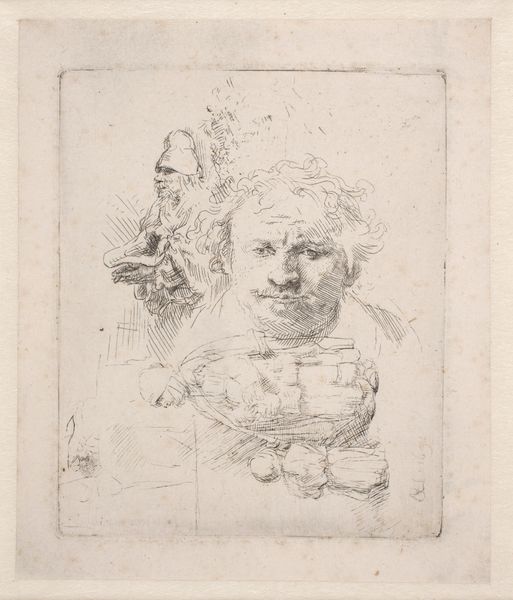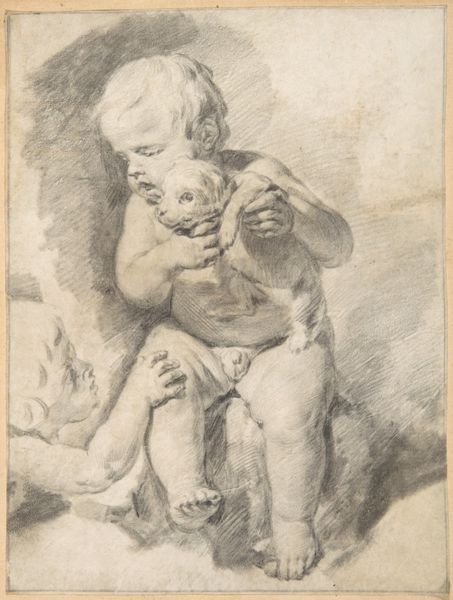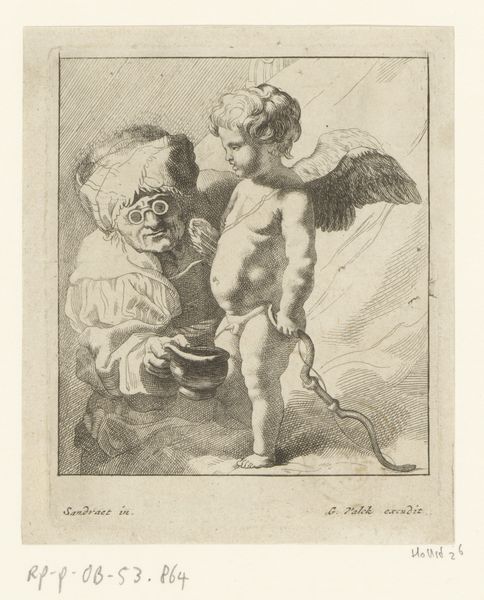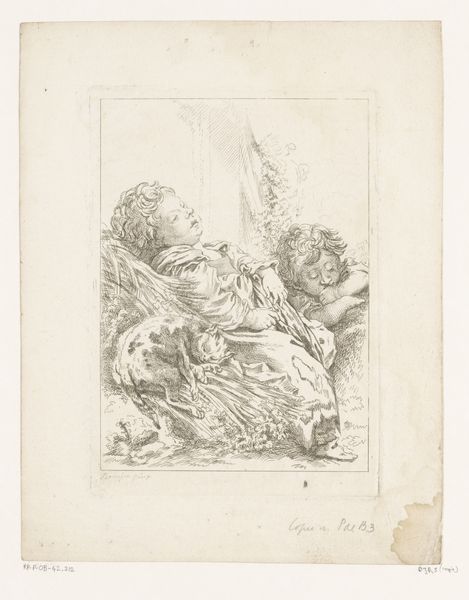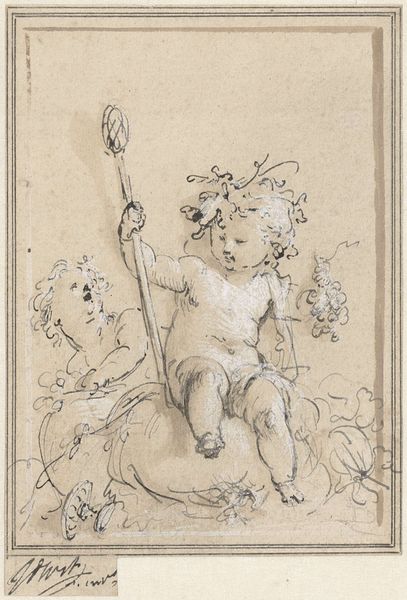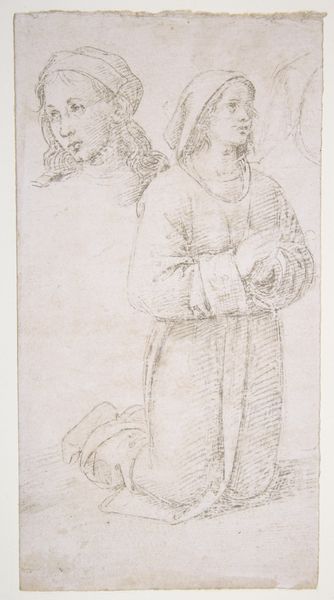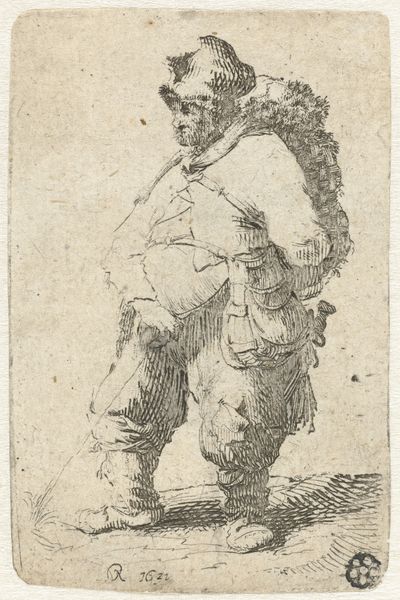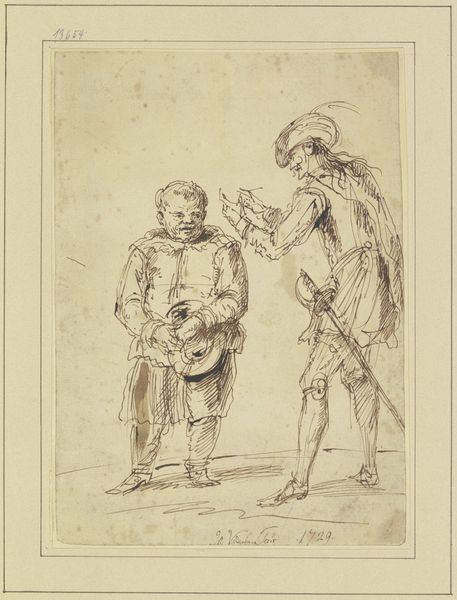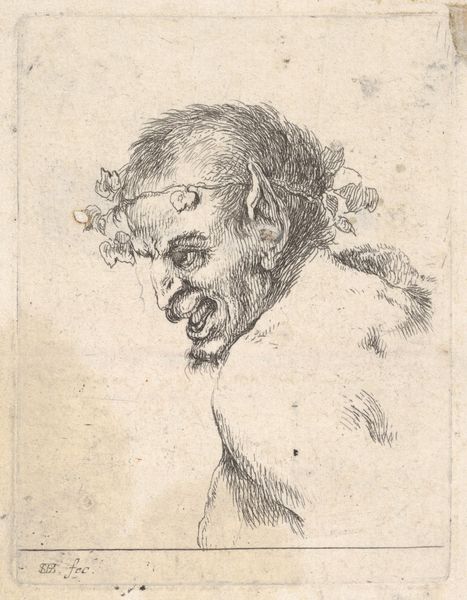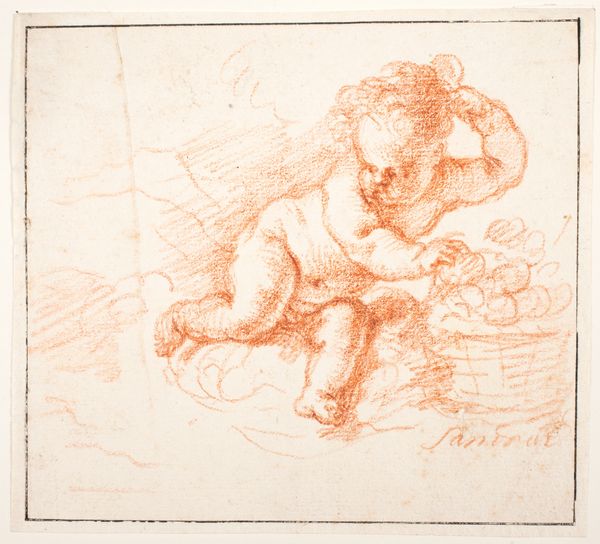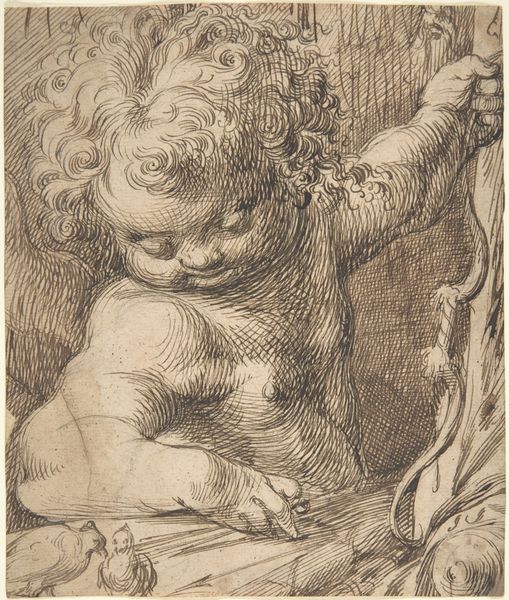
Sheet of Studies with the Head of the Artist, a Beggar Man, and Woman and Child 1651
0:00
0:00
drawing, print, etching
#
portrait
#
drawing
#
self-portrait
#
baroque
#
dutch-golden-age
# print
#
etching
#
figuration
#
pencil drawing
#
pen-ink sketch
#
line
#
portrait drawing
#
realism
Dimensions: plate: 10.3 x 9.3 cm (4 1/16 x 3 11/16 in.)
Copyright: National Gallery of Art: CC0 1.0
Rembrandt van Rijn made this etching on a metal plate, a sheet of studies featuring his own head, along with a beggar and a woman with a child. The etching process involves coating a metal plate with a waxy, acid-resistant ground. The artist then draws through the ground with a needle, exposing the metal. When the plate is dipped in acid, the exposed lines are bitten, creating grooves. Ink is applied to the plate, then wiped off the surface, remaining only in the etched lines. Finally, the plate is pressed onto paper, transferring the image. The resulting print bears the marks of this labor-intensive process. The fine lines, the cross-hatching that builds up tone, and the overall composition are all testaments to Rembrandt's skill and the unique properties of the etching medium. What is also intriguing here is the democratic nature of the print itself. Unlike a painting, it could be reproduced and sold relatively cheaply, making Rembrandt's art accessible to a wider audience. This challenges the traditional hierarchies of art, inviting us to consider the social and economic context in which it was made.
Comments
No comments
Be the first to comment and join the conversation on the ultimate creative platform.
